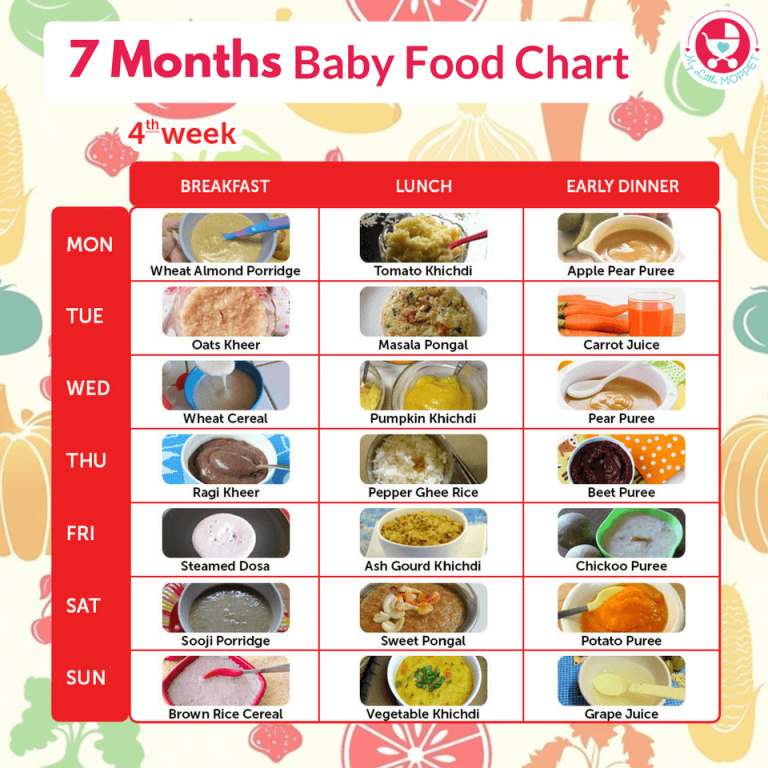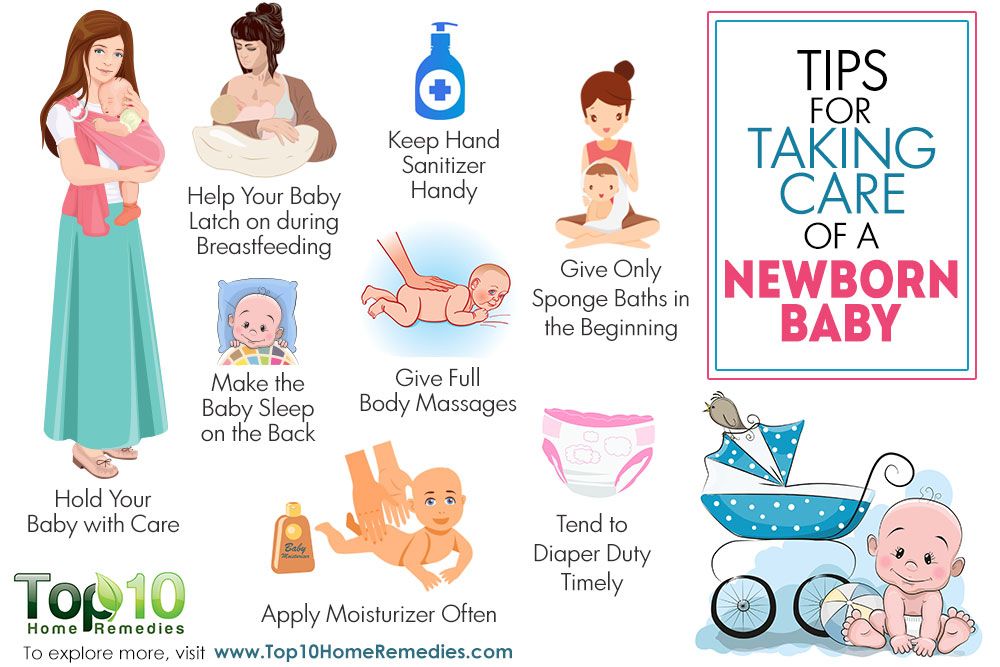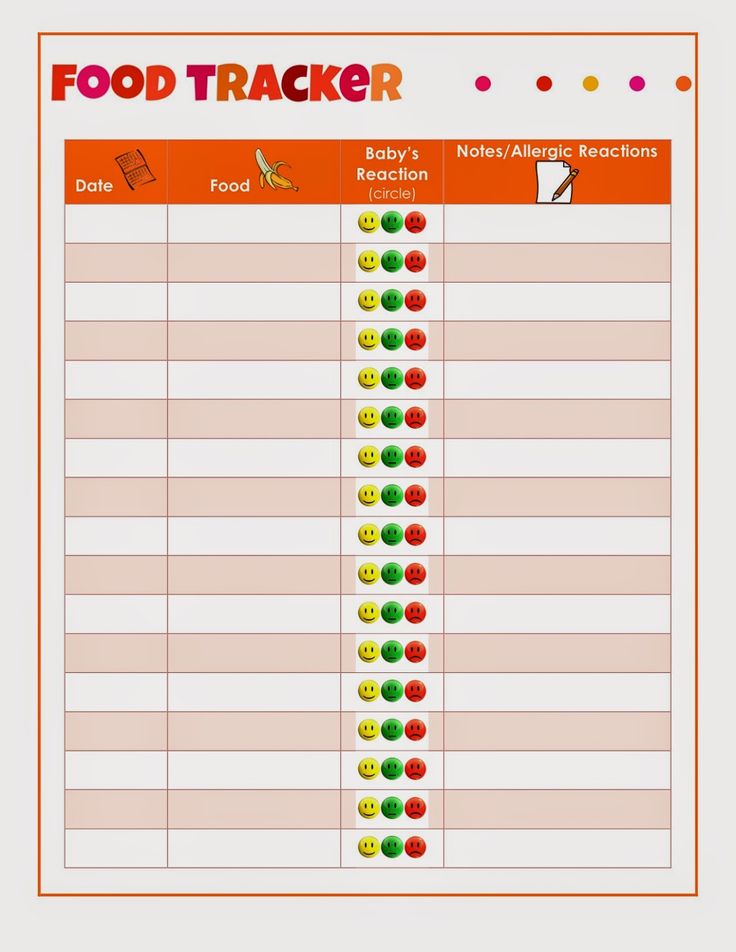How much solid food should a 4 month old baby eat
4 to 6 Months Food Chart
Introducing Solid Foods to Babies 4 – 6 Month Old Baby Solid Food Charts for babies age 4 – 6 months
Introducing solid foods to your little one is a huge milestone that lays the foundation for healthy eating habits.
This is one stage that I know can be a very nerve wracking and scary for many parents. One of the most important things to remember is that there is no gold standard “right way” of starting baby on solid foods. I have compiled solid food charts to help you have an idea of what foods are safe, healthy and nutritious for your baby as you both begin the journey into solid foods. Remember, many pediatricians are recommending that babies start solids at 6 months of age
Click to Print
More about what your 4-6 month old baby can eat
AGE/STAGE: Babies 4-6 MonthsThe AAP recommends that an infant not be started on solid foods until after 6 months of age. Many pediatricians still start babies on solids around 4 months of age. This chart accommodates all ages and stages up to 12 months.
Rice and Oatmeal cereals are the least of the allergenic grains and thus most babies are started out with those cereals. You don’t HAVE to start with cereal – try avocado instead or banana.
FRUITSMay be served raw after 8 months old or earlier if the fruits are soft and baby does not have digestion troubles – bananas and avocados do NOT need to be cooked ever.
VEGGIESAlways serve cooked until after 12 months old or when baby can chew well enough so that no choking hazard is present.
PROTEINAlways serve cooked with no pink areas – NEVER give a small baby/child raw meat or fish
DAIRYNEVER replace breast milk or formula until after 12 months of age – serious health risks are possible. Never give a child under the age of 2yrs old low fat or skim milk products; whole milk is necessary.
Never give a child under the age of 2yrs old low fat or skim milk products; whole milk is necessary.
When thinking about starting baby on solid foods and introducing solids to baby, a good rule of thumb is to “Watch the Baby – Not the Calendar”. This is true when introducing solid foods (complementary foods) for both breastfed and formula fed infants. Just because baby has turned 4 months old does not mean she must be introduced to solid foods.
How much will your 4 month – 6 month old baby eat at his first meal?
Babies will probably only eat 1/2 of a tablespoon portion of food the very first times you begin solids. Don’t expect your baby to “finish” a meal; remember this is a new experience for your baby. As your baby gets older and is eating more solids, you will gradually increase the portion sizes. Also, keep in mind that breast milk and/or infant formula are providing for the total nutrition of your baby at this stage.
Read How Much Food Should My Baby Eat page for more information.
Many parents find their babies will push the food out of their mouths on the first few tries. This is normal however it may also indicate that your baby is not yet ready for solid foods. Only you know your baby and will be able to decide if baby is truly ready for solids.
A baby’s tummy is the size of his fist – remember this as you are feeding him; it doesn’t take much food to make a “meal”!
Breast-Fed Baby Growth Charts from the World Health Organisation – Reflecting Breast-Fed Babies Growth Patterns
The charts presented are general guidelines with solid baby foods that are age appropriate. They may seem somewhat conservative in nature compared to guidelines from other sources. We show age-ranges for different foods and we have researched and compiled these charts from various medical authorities such as private pediatricians, the AAP, the AAFP and the WHO. Feel free to print the chart and ask your Pediatrician about the listings and recommendations.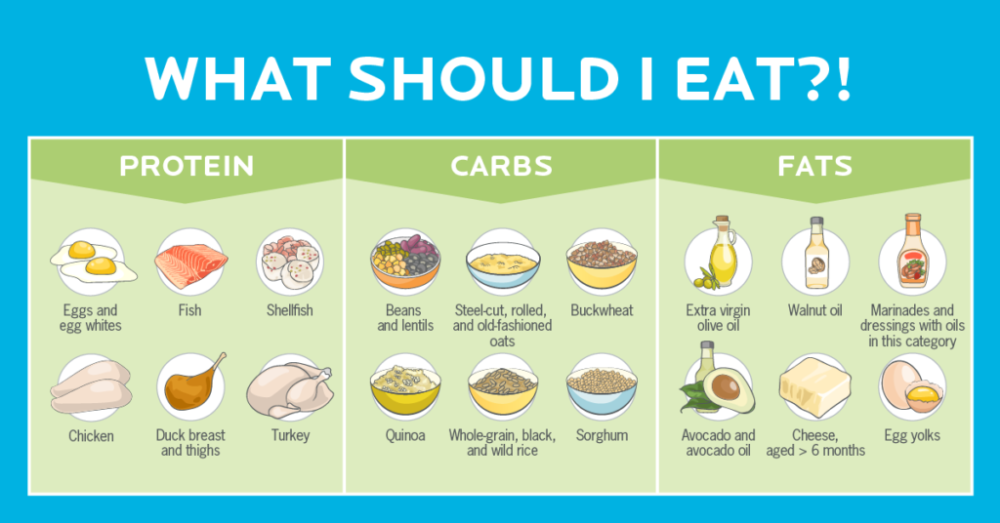 Our visitors say their pediatricians are impressed with our Chart’s suitability and accuracy of listings.
Our visitors say their pediatricians are impressed with our Chart’s suitability and accuracy of listings.
Remember, always consult with your pediatrician regarding introducing solid foods to your baby and specifically discuss any foods that may pose allergy risks for your baby.
Download the new 4-6 month old food diary chart!
Suggested Daily “Milk” Intakes for Babies age 0 to 12 months
- 0-3 Months of age: Breastfeed every 1-3 hours or Formula 18-40 ounces
- 4-5 Months of age: Breastfeed every 2-4 hours or Formula 24-45 ounces
- 6-8 Months of age: Breastfeed every 3-4 hours or Formula 24-37 ounces
- 9-12 Months of age: Breastfeed every 4-5 hours or Formula 24-31 ounces
Whole Cow Milk, as a drink, should not be introduced until 12 months of age. Learn about Introducing Yogurt and Feeding Cheese to your baby.
Table compiled from Merck SourceRelated Articles on Introducing Solids to a 4-6 Month Baby
- USDA- Feeding Infants Solid Foods
- US National Library of Medicine – Infant and Newborn Nutrition
- AAP- Infant Food and Feeding
SHARE ON FACEBOOK SHARE ON PINTEREST
How Often and How Much Should Your Baby Eat?
By: Sanjeev Jain, MD, FAAP
One of the most common questions new parents have is how often their baby should eat. The best answer is surprisingly simple: in general, babies should be fed whenever they seem hungry.
The best answer is surprisingly simple: in general, babies should be fed whenever they seem hungry.
How do I know when my baby is hungry?
For babies born
prematurely or with certain medical conditions, scheduled feedings advised by your pediatrician are best. But for most healthy, full-term infants, parents can look to their baby rather than the clock for hunger cues. This is called feeding on demand, or
responsive feeding.
Hunger cues
A hungry baby often will cry. But it's best to watch for hunger cues before the baby starts crying, which is a late sign of hunger and can make it hard for them to settle down and eat.
Some other typical hunger cues in babies:
Licking lips
Sticking tongue out
Rooting (moving jaw and mouth or head in search of breast)
Putting his/her hand to mouth repeatedly
Opening her mouth
Fussiness
Sucking on everything around
It is important to realize, however, that every time your baby cries or sucks it is not necessarily because he or she is hungry. Babies suck not only for hunger, but also for comfort; it can be hard at first for parents to tell the difference. Sometimes, your baby just needs to be cuddled or changed.
Babies suck not only for hunger, but also for comfort; it can be hard at first for parents to tell the difference. Sometimes, your baby just needs to be cuddled or changed.
General guidelines for baby feeding
It is important to remember all babies are different―some like to snack more often, and others drink more at one time and go longer between feedings. However, most babies will drink more and go longer between feedings as they get bigger and their tummies can hold more milk:
Most newborns eat every 2 to 3 hours, or 8 to 12 times every 24 hours. Babies might only take in half ounce per feeding for the first day or two of life, but after that will usually drink 1 to 2 ounces at each feeding. This amount increases to 2 to 3 ounces by 2 weeks of age.
At about 2 months of age, babies usually take 4 to 5 ounces per feeding every 3 to 4 hours.
At 4 months, babies usually take 4 to 6 ounces per feeding.
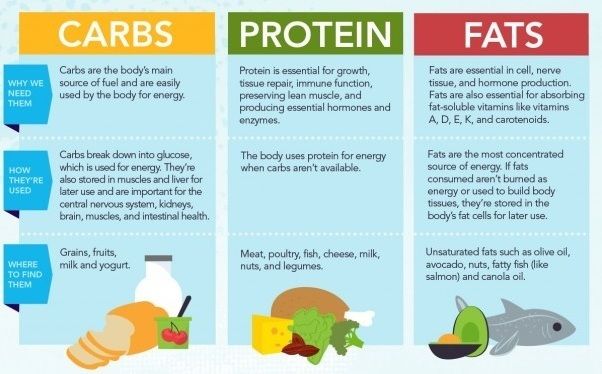
At 6 months, babies may be taking up to 8 ounces every 4 to 5 hours.
Most babies will increase the amount of formula they drink by an average of 1 ounce each month before leveling off at about 7 to 8 ounces per feeding. Solid foods should be started at about 6 months old.
Concerns about overfeeding or underfeeding your baby
Too full?
Babies are usually pretty good at eating the right amount, but they can sometimes take in more than they need. Infants who are bottle feeding may be more likely to overfeed, because drinking from a bottle may take less effort than breastfeeding.
Overfed babies can have stomach pains, gas, spit up or vomit and be at higher risk for obesity later in life. It's better to offer less, since you can always give more if your baby wants it. This also gives babies time to realize when they're full.
If you are concerned your baby wants to eat
all the time―even when he or she is full―talk with your pediatrician.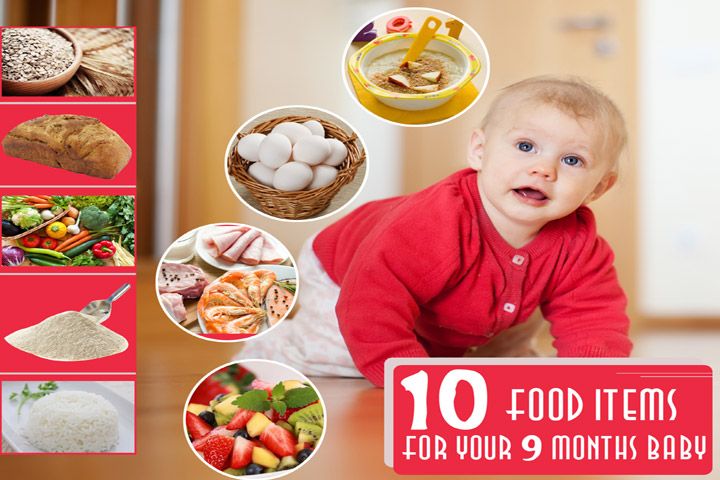 Pacifiers may be used after feeding to help sooth healthy-weight babies who like to suck for comfort, rather than nutrition. For babies who are breastfed, it's best to wait to offer pacifiers until around 3 to 4 weeks of age, when breastfeeding is well-established.
Pacifiers may be used after feeding to help sooth healthy-weight babies who like to suck for comfort, rather than nutrition. For babies who are breastfed, it's best to wait to offer pacifiers until around 3 to 4 weeks of age, when breastfeeding is well-established.
Trouble gaining weight?
Most babies will double their birth weight by 5 months of age and triple their birth weight by their first birthday. If your baby is having trouble gaining weight, don't wait too long between feeding―even if it means waking your baby. Be sure to talk with your pediatrician about how often and how much to feed your baby.
How do I know if my baby is getting enough to eat?
Daily diapers
A newborn's
diaper is a good indicator of whether he or she is getting enough to eat. In the first few days after birth, a baby should have 2 to 3 wet diapers each day. After the first 4 to 5 days, a baby should have at least 5 to 6 wet diapers a day. Stool frequency is more variable and depends whether your baby is
breastfed or formula fed.
Growth charts
During regular health check-ups, your pediatrician will check your baby's weight and plot it on a growth chart. Your baby's progress on the growth chart is one way to tell whether or not they are getting enough food. Babies who stay in healthy growth percentile ranges are probably getting a healthy amount of food during feedings.
Remember
Talk with your pediatrician if you have any questions or concerns about your baby getting the right amount to eat.
More information:
- Making Sure Your Baby is Getting Enough Milk
- Amount and Schedule of Formula Feedings
- Is Your Baby Hungry or Full? Responsive Feeding Explained (Video)
- Remedies for Spitty Babies
- Ask the Pediatrician: With the baby formula shortage, what should I do if I can't find any?
- Ask the Pediatrician: How should we feed our baby if we're running low on money?
-
Airplane Choo Choo: A Feeding Guide for Children (National Dairy Council)
About Dr.
 Jain:
Jain:
Sanjeev Jain, MD, FAAP, is a Clinical Associate Professor of General Pediatrics and Adolescent Medicine at the University of Wisconsin School of Medicine and Public Health. Within the American Academy of Pediatrics, he is a member of the Section on International Child Health and the Wisconsin State Chapter.
The information contained on this Web site should not be used as a substitute for the medical care and advice of your pediatrician. There may be variations in treatment that your pediatrician may recommend based on individual facts and circumstances.
How much food should a child eat? What is a serving or serving size for a child? - Encyclopedia Baby food
Levchuk Victoria©
Moms often ask these questions, don't they? Most pediatricians will say, "Feed your baby as much as he can eat."
When a baby is introduced to complementary foods, make sure he is still getting the right amount of formula and/or mother's milk.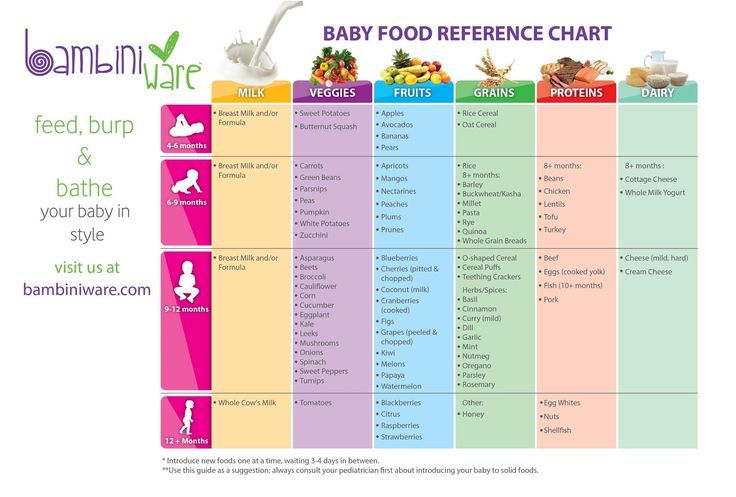 Solid foods at an early stage are meant to be practiced. Complementary foods are not intended to provide complete nutrition to the baby like formula and/or breast milk. nine0005
Solid foods at an early stage are meant to be practiced. Complementary foods are not intended to provide complete nutrition to the baby like formula and/or breast milk. nine0005
Contents:
How much solid food a child should eat depends on many different things.
It should not be forgotten that the child is a human being and, like all of us, he has his own appetite. This affects how much complementary foods he will eat. As with adults, some babies eat more than others due to their individual appetite. Below are some of the main points that are important to remember when feeding your baby.
- A baby who was introduced to solid foods at four months of age is likely to eat more solid foods than a baby who first tried food at six months of age. nine0018
- A child who eats soft cut foods eats less than a child who is fed pureed foods.
- A child who is sick or teething may eat less than a few days ago, and then suddenly develops an atypical appetite.

- A child who is busy studying a carpet or a new book may not be interested in food at the moment.
- Naturally, growth retardation in infants also affects appetite. It can be brutal for weeks or days, and then all of a sudden, the child refuses to eat. Children who experience frequent growth spurts will tend to reduce their food intake during growth retardation. nine0018
How does a mother know if a child is eating enough adult food?
All pediatricians will say: "A child will never go hungry!" A huge number of healthy children will eat the right amount of food that they need. Parents need to fight the urge to offer "just one more bite" when a child shows they're done. After all, you don’t want to accidentally disrupt the child’s developing ability to self-regulate their feeding by continuing to try to feed or feed the child. It is important for parents to pay attention to the baby's signals, as the baby's feeding patterns will change daily and can be affected by the activities around him. By offering a good balanced diet, you can ensure that your child is eating the right amount of nutrients. nine0005
By offering a good balanced diet, you can ensure that your child is eating the right amount of nutrients. nine0005
Feeding example
Babies should be able to sit up on their own and spoon feed before introducing complementary foods.
Why can't a mother introduce complementary foods to a child under 4 months of age? Introducing solid foods too early means that the baby receives less breast milk during infancy, and this reduces the chance of receiving the optimal benefits of protection against infection. nine0005
What to feed the baby:
Formula milk or mother's milk every 1-3 hours, formula milk 500-1200 grams per day seems hungry after the main breastfeeding, the baby is ready for the introduction of complementary foods! The child should be able to hold his head well, close his mouth with a spoon, and move food towards the back of his mouth. You can read all the signs of readiness for weaning here. nine0005
How to feed a child:
Dairy Milk or mother's milk
1-3 tablespoons of food for 1 or 2 dishes
-
6-8 months:
Dairy mixture and / or maternal milk still the main food at this age. Babies in this period are just starting solid foods, so the diet tried at 4-6 months of age will also apply. Some children can eat up to 230 grams of solid food 2-3 times a day. nine0005
Babies in this period are just starting solid foods, so the diet tried at 4-6 months of age will also apply. Some children can eat up to 230 grams of solid food 2-3 times a day. nine0005
What to feed the baby:
Formula milk or mother's milk
Complementary foods 2-3 times a day.
-
8-10 months:
Many babies will eat 3 meals a day at this stage; including cereals, fruits, vegetarian dishes, breads and meats, maybe eggs.
It is important for parents to pay attention to the baby's signals, as the baby's feeding patterns will change daily and may be affected by the activities around him. The child will eat only the right amount of food for himself. nine0005
How to feed a child:
Dairy mixture or maternal milk
Power feeding 3 times a day
-
10-12 months:
Many children will eat 3 times a day at this stage; including cereals, fruits, vegetarian dishes, bread, meat, fish, eggs.
It is important for parents to pay attention to the baby's signals, as the baby's feeding patterns will change daily and may be affected by the activities around him. The child will eat only the right amount of food for himself. nine0005
How to feed a child:
Dairy mixture or maternal milk
PRODUCT 3 times a day plus 2 additional snacks
Signs that the child wants to eat:
- leans behind a spoon
- Opening his mouth
- Grabs food and tries to put it in the mouth
Signs that the baby is full
- Closing the mouth when a spoon approaches it
- Spitting out food while feeding
- Turning the head to the side when the spoon approaches
A healthy, well-fed baby should wet diapers regularly and also have bowel movements once or twice a day.
When visiting a doctor, it is necessary to make sure that the child is healthy in order to properly monitor the child's height and weight according to the schedule.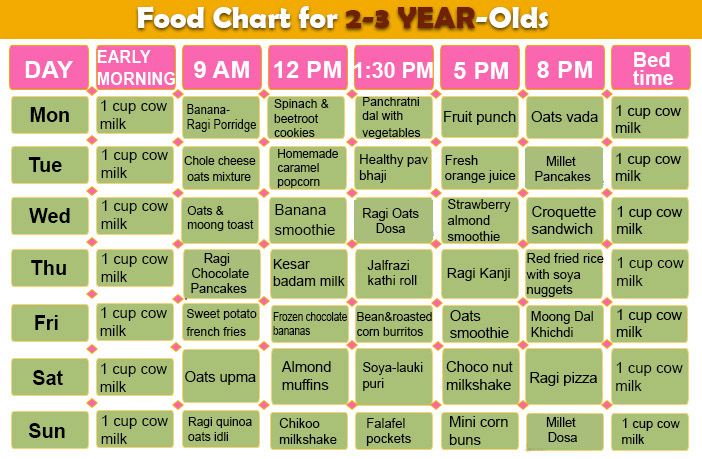
If there is any doubt about feeding the baby, the pediatrician should be consulted about the foods and amounts of solid food. The doctor should be able to help arrange feedings as well as help allay concerns. nine0005
It is important to remember to consult with your pediatrician regarding the introduction of complementary foods for your baby and to specifically discuss any foods that may pose an allergy risk to your baby.
There are no two identical children who will eat the same foods. And the amount of food for each child individually!
To calculate your daily milk intake, you can use the following:
All of the baby's signals during feeding tell him that the baby is eating the right amount of food for him.
There is no exact rule or guideline for how much a child should eat during the day. Simply because every child is different. Babies will eat and drink as much formula or mother's milk as they need.
For example, one 7-month-old baby eats 2 whole jars of baby food in one day while another 7-month-old baby barely manages to eat one. Also, one child can eat every 2 hours in his 7 months, and the other every 3-4 hours. Again, each child has different nutritional and milk needs and these needs are tailored to the individual. nine0005
Baby menu at seven months
0-6 months
Article
5/5 1 reviews
What should be the menu of a child at 7 months? What foods and in what quantity can be introduced into the diet at this age? When and at what intervals to give the baby to eat? We will help develop an approximate menu for a 7-month-old baby and answer the most exciting questions regarding the nutrition of a baby up to a year old. nine0005
7 min. for reading Feb.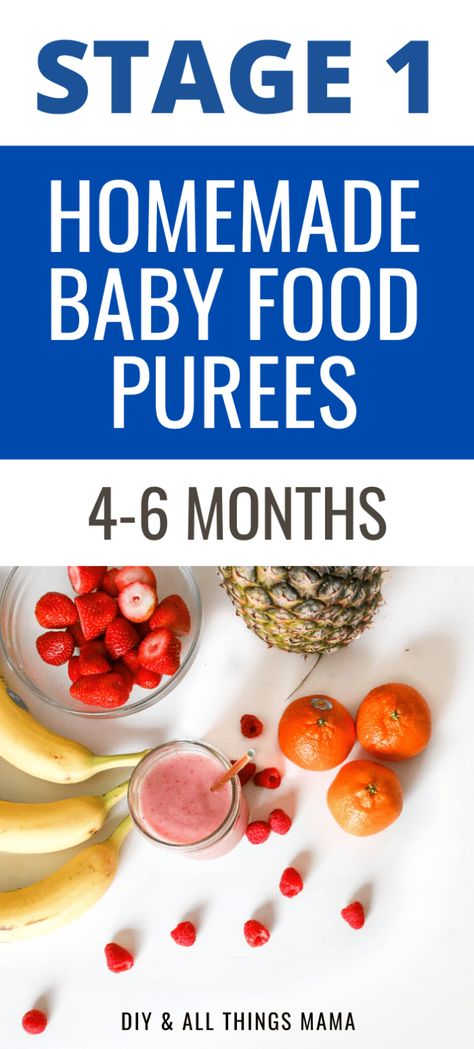 17, 2022
17, 2022
Contents
- Diet: when and how much should a child eat at 7 months
- Baby's menu at 7 months: introducing new products
- Consistency of dishes
- Meal schedule and approximate daily menu
- Sample diet for a 7 month old baby allergic to cow's milk proteins: Table
- FAQ
- Breastfeed every 3-4 hours while breastfeeding.
- If you give your baby expressed breast milk, he needs approximately 710 grams per day. With 5-6 meals a day, this is about 120 to 200 grams of milk per meal.
- If the baby is formula-fed (FW), he needs 170 to 230 grams of formula up to 4 times a day, provided that 2 more feedings replace complementary foods. To find out how much mixture you need, be guided by the instructions on the package, the recommendations of the pediatrician. nine0018
- From the age of 6 months, only mother's milk or adapted infant formula is not enough for a baby - he needs a variety of complementary foods.
 Introduce no more than one new product per day into the child’s menu at 7 months and consult a pediatrician first. After getting acquainted with different foods, up to three complementary foods can be given daily: this can be one or two tablespoons or 115-170 grams (8-12 tablespoons), depending on the baby and the specific product.
Introduce no more than one new product per day into the child’s menu at 7 months and consult a pediatrician first. After getting acquainted with different foods, up to three complementary foods can be given daily: this can be one or two tablespoons or 115-170 grams (8-12 tablespoons), depending on the baby and the specific product.
Important
Calculation of servings and the number of feedings depends on the individual characteristics of the development and needs of the child. Therefore, first of all, be guided by the recommendations of your pediatrician and the needs of the baby.
Baby menu at 7 months: introducing new products
The basis of the diet is still breast milk or infant formula. To diversify the menu, children's adapted food will help: fruit and vegetable purees, milk and dairy-free cereals, juices, as well as some products from the "adult table". nine0005
Cereals
At 7 months, dairy-free and milk porridges, along with breast milk, are the basis of a child's nutrition. To start complementary foods, choose gluten-free liquid one-component cereals with a high iron content: rice, buckwheat, oatmeal. A little later - corn and semolina. Start complementary foods with half or a whole teaspoon, gradually increasing the serving to 150 grams.
To start complementary foods, choose gluten-free liquid one-component cereals with a high iron content: rice, buckwheat, oatmeal. A little later - corn and semolina. Start complementary foods with half or a whole teaspoon, gradually increasing the serving to 150 grams.
Important
Dairy-free porridge is diluted with breast milk or milk formula, milk porridge - with purified boiled water. nine0278
Find out more: Gerber® Baby Cereals: product range
Vegetable and fruit purees
Vegetable and fruit purees diversify the diet and introduce new tastes to the baby. According to WHO recommendations, the best product to start with is a one-component vegetable puree from zucchini, broccoli, cauliflower or potatoes. These vegetables are less allergenic than other foods. If the child does not have allergies, pumpkin, carrot, pea and tomato puree can be given a little later. nine0005
Find out more: Gerber® Vegetable Purees
After introducing vegetable purees into your diet, it's time for your baby to get to know sweet and healthy fruit purees. Like vegetable, fruit complementary foods are also recommended to start with one-component low-allergenic foods. Apple, pear or banana puree is best for this. Start with half or a whole teaspoon and gradually increase the serving to 100-150 grams.
Like vegetable, fruit complementary foods are also recommended to start with one-component low-allergenic foods. Apple, pear or banana puree is best for this. Start with half or a whole teaspoon and gradually increase the serving to 100-150 grams.
Find out more: Gerber® fruit purees
Meat
Meat is a developmentally necessary product rich in iron and protein, which is well absorbed in the body. Start with homogenized options. The product must contain only one type of meat (diet turkey, rabbit, chicken, veal) and no additional components. If the crumbs have a tendency to food allergies, choose meat very carefully, it is better to consult a doctor in advance. Pay attention to the composition of baby food and its age-appropriate baby. First, let the baby try half a teaspoon. If no adverse reactions occur, gradually increase the meat rate to 60 grams. nine0005
Find out more: Gerber® Meat Purees
Juices
Fruit juice is great for snacking and menu variety. Young children tolerate clarified apple and pear juice better, so they should be introduced first. Give the baby adapted baby juices: they do not contain sugar or other additives undesirable for the child. Ordinary store-bought juices can only be drunk by children over three years old.
Young children tolerate clarified apple and pear juice better, so they should be introduced first. Give the baby adapted baby juices: they do not contain sugar or other additives undesirable for the child. Ordinary store-bought juices can only be drunk by children over three years old.
0030
Advice
Introduce your baby to juices after the introduction of cereals and vegetable purees. Often the child gets used to sweet juices and then does not eat foods with a less bright taste.
Egg yolk
In addition to cereals and mashed potatoes, boiled egg yolk is introduced at the age of 7 months, as it is an excellent source of omega-fats, selenium, phosphorus and vitamins. Please note that you need to give the egg not the whole, but only the yolk. But, like any other product that you give to try for the first time, it should be introduced carefully and little by little to make sure that the baby does not have an allergy.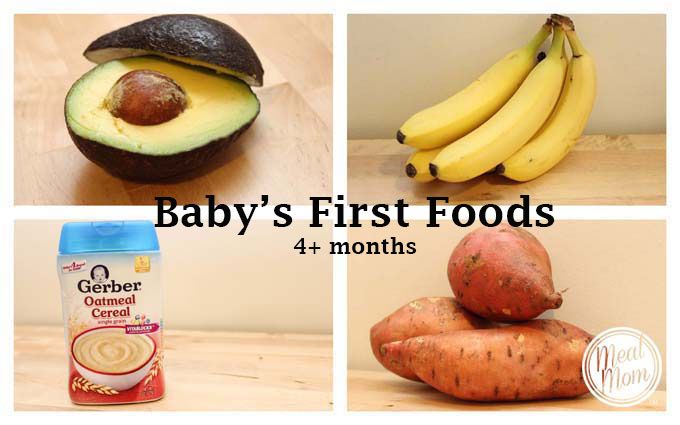 Do not combine with other food! Only when you "test" the yolk, it is allowed to add it to cereals and vegetable purees. nine0005
Do not combine with other food! Only when you "test" the yolk, it is allowed to add it to cereals and vegetable purees. nine0005
Important
There is an opinion that children with allergies can be fed quail eggs. But it is important to remember that quail eggs can also be allergic, as they also contain egg white - an allergen that is found in chicken eggs. Therefore, do not experiment, but seek the advice of a pediatrician.
See also: Introduction of complementary foods to children with food allergies
Baby biscuits and crackers
At seven months, some babies begin to erupt their first teeth. Therefore, you can add crackers and children's cookies to food. But do not forget that they should not be too hard so that the child does not get hurt and choke. It is also better to choose special products without added salt, sugar, synthetic leavening agents and preservatives.
Important
The child should eat solid food in a sitting position and strictly under adult supervision. nine0278
nine0278
Consistency of dishes
The main component of the diet remains liquid and homogeneous (no lumps) - breast milk or milk formula, milk and dairy-free cereals. As the baby grows, the baby's food should change from liquid and homogeneous to thicker and puree, mashed. When the body adapts and is able to digest solid food, they begin to carefully introduce small, medium and coarsely ground foods, give children's cookies and crackers. At 7 months, some babies already have teeth, but the child cannot yet chew thoroughly and safely swallow vegetables, fruits and meat. Therefore, solid food should be given only in a grated form. It is important that the puree is not too thick, otherwise the child may accidentally choke. nine0005
Advice
If you are making puree yourself, carefully remove everything that is not rubbed and can get into the crumbs' respiratory tract: bones, fat, veins, skin, films. To make the puree easier to swallow, add some boiled water, unsalted vegetable broth, vegetable puree already familiar to the baby, or breast milk (milk mixture).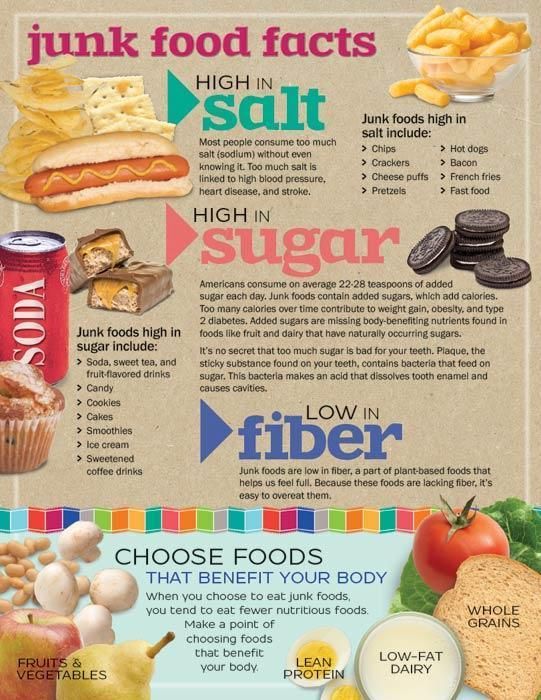
By about 7 months of age, the baby has mastered the skill of "palm grip" and can independently hold solid food in the handle. From now on, you can give your child special baby cookies or snacks. At the same time, make sure that the baby eats slowly, in a sitting position and does not choke. nine0005
Important
Your baby should be ready for more sticky or solid foods. Therefore, before changing the consistency of food for a child, consult a pediatrician.
What can be given to children at 7 months and at what time to feed? Parents can begin to form a classic division of food consumption per day. But at 7 months, the baby needs to be fed not three or four, but five times a day at intervals of four hours. The first and final feeding is mother's milk or formula. Complementary foods are not given at this time in order to prevent overeating. nine0005
*Dairy-free porridge should be diluted with breast milk or infant formula given to the baby. Milk porridge is diluted with water.
Milk porridge is diluted with water.
Tip
Do not salt or sweeten food. It is better to introduce the baby to sugar and salt after a year.
| Feeding time | Products | Serving Size |
|---|---|---|
| I feeding 6 hours | Breast milk or medicated formula for infants with cow's milk protein intolerance | 200 ml |
| II feeding 10 hours | Nestle® Dairy-Free Rice Porridge* | 130 g |
| Vegetable oil (add to food) | about 1 tsp | |
| Gerber® Apple or Williams Pears Fruit Puree | 70 g | |
| III feeding 14 hours | Gerber® Vegetable Puree Broccoli, Cauliflower | 170 g | nine0201
| Vegetable oil (add to food) | about 1 tsp | |
| Gerber® Meat Puree Tender Vegetables with Rabbit | 30 g | |
| IV feeding 18 hours | Vegetable puree or dairy-free porridge** | 170 g |
| Vegetable oil (add to food) | about 1 tsp | |
| Gerber® Tender Turkey Meat Puree | 20 g | |
| V feeding 22 hours | Breast milk or formula for infants with intolerance to cow's milk proteins | 200 ml |
*Dairy-free porridge should be diluted with breast milk or formula for infants with intolerance to cow's milk proteins. **you can either alternate porridge or vegetables, or offer a mixed dish - porridge with vegetables.
**you can either alternate porridge or vegetables, or offer a mixed dish - porridge with vegetables.
Now you know what products and in what form can be introduced into the menu of a child at 7 months. It is preferable if it is certified baby food that meets all age requirements and high safety standards. nine0005
See also: Do we cook ourselves or use baby food?
1. At what age should complementary foods start?
The World Health Organization (WHO) recommends introducing complementary foods to your baby's menu at 6 months of age.
2. Where to start complementary foods?
Experts advise starting complementary foods with one-component homogenized vegetable purees.
3. How much should a 7-month-old baby eat?
At 7 months, a baby needs a portion of food per day, which is equal to about ⅛ of body weight. This is 1000-1200 ml of food, excluding water, juices, children's tea.




